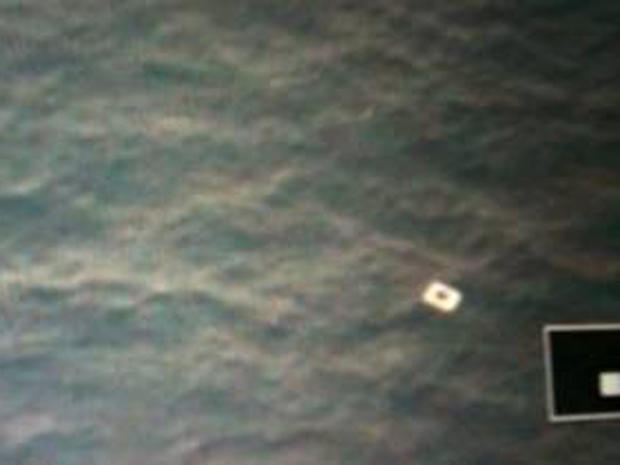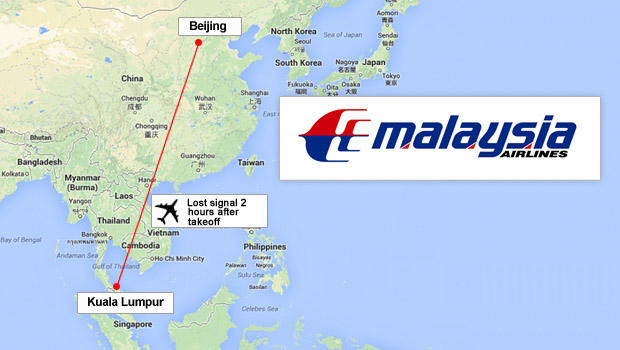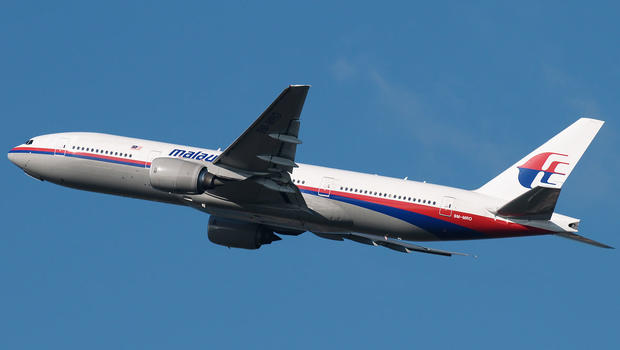Malaysia Airlines plane: Missing jet may have turned back, officials say
KUALA LUMPUR, Malaysia - Military radar indicates that the missing Boeing 777 jet may have turned back before vanishing, Malaysia's air force chief said Sunday as international intelligence agencies joined the investigation into two passengers with suspicious identifications.
Air force chief Rodzali Daud didn't say which direction the plane veered when it apparently went off course, or how long it flew in that direction.
Meanwhile, a Vietnamese official said search crews may have spotted parts of the plane's wreckage, although this has not been confirmed yet.
The state-run Thanh Nien newspaper cited Lt. Gen. Vo Van Tuan, deputy chief of staff of Vietnam's army, as saying searchers in a low-flying plane had spotted an object suspected of being a door from the missing jet. It was found in waters about 56 miles south of Tho Chu island, in the same area where oil slicks were spotted Saturday.
"From this object, hopefully (we) will find the missing plane," Vo said. Thanh Nien said two ships from the maritime police were heading to the site.
The revelations add to the uncertainties surrounding the final minutes of flight MH370, which was carrying 239 people when it lost contact with ground controllers somewhere between Malaysia and Vietnam after leaving Kuala Lumpur early Saturday morning for Beijing.
A massive international sea search has so far turned up no trace of the plane, which lost contact with the ground when the weather was fine, the plane was already cruising and the pilots didn't send a distress signal - unusual circumstance for a modern jetliner operated by a professional airline to crash.
More than 36 hours after the last contact with the flight, officials said they were widening the search to cover vast swathes of sea around Malaysia and off Vietnam.
Vietnamese air force jets spotted two large oil slicks Saturday, but it was unclear if they were linked to the missing plane, and no debris was found nearby. The lack of debris adds to suspicions because dozens of military and civilian vessels and aircraft have criss-crossed waters beneath the lost plane's flight path.
"We are trying to make sense of this," the Malaysian air force chief told a media conference. "The military radar indicated that the aircraft may have made a turn back and in some parts, this was corroborated by civilian radar."
Malaysia Airlines Chief Executive Ahmad Jauhari Yahya said pilots were supposed to inform the airline and traffic control authorities if the plane does a U-turn. "From what we have, there was no such distress signal or distress call per se, so we are equally puzzled," he said.
Authorities were checking on the identities of two passengers who boarded the plane with stolen passports. On Saturday, the foreign ministries in Italy and Austria said the names of two citizens listed on the flight's manifest matched the names on two passports reported stolen in Thailand.
"I can confirm that we have the visuals of these two people on CCTV," Malaysian Transport Minister Hishammuddin Hussein said at a news conference late Sunday, adding that the footage was being examined. "We have intelligence agencies, both local and international, on board."
"Our focus now is to find the aircraft," he said, adding that finding the plane would make it easier for authorities to investigate any possible foul play.
In a forceful statement, Interpol Secretary-General Ronald Noble chided authorities for "waiting for a tragedy to put prudent security measures in place at borders and boarding gates."
"Now, we have a real case where the world is speculating whether the stolen passport holders were terrorists," Noble said. "Interpol is asking why only a handful of countries worldwide are taking care to make sure that persons possessing stolen passports are not boarding international flights."
A telephone operator on a China-based KLM hotline confirmed Sunday that passengers named Maraldi and Kozel had been booked to leave Beijing on a KLM flight to Amsterdam on Saturday. Maraldi was to fly on to Copenhagen, Denmark, and Kozel to Frankfurt, Germany.
She said the pair booked the tickets through China Southern Airlines, but she had no information on where they bought them.
Having onward reservations to Europe from Beijing would have meant the men, as holders of EU passports, would not have needed visas for China.
Interpol said it and national investigators were examining other suspect passports and working to determine the true identities of those who used the stolen passports to board the Malaysia Airlines flight.
White House Deputy National Security Adviser Tony Blinken said the U.S. was looking into the stolen passports, but that investigators had reached no conclusions.
The stolen passports, and the sudden disappearance of the plane that experts say is consistent with a possible on-board explosion, strengthened existing concerns about terrorism as a possible cause for the disappearance. Al Qaeda militants have used similar tactics to try and disguise their identities.
Despite that, other possible causes would seem just as likely at this stage, including a catastrophic failure of the engines or the plane itself, extreme turbulence and pilot error or even suicide. Establishing a cause with any certainty will need data from flight recorders and a detailed examination of any debris, something that will take months if not years.
A total of 22 aircraft and 40 ships have been deployed to the area by Malaysia, Thailand, Singapore, Indonesia, China and the United States, not counting Vietnam's fleet.
Two-thirds of the jet's passengers were Chinese. The rest were from elsewhere in Asia, Europe and North America -- including three Americans.
After more than 30 hours without contact with the aircraft, Malaysia Airlines told family members they should "prepare themselves for the worst," Hugh Dunleavy, the commercial director for the airline, told reporters.
Finding traces of an aircraft that disappears over sea can take days or longer, even with a sustained search effort. Depending on the circumstances of the crash, wreckage can be scattered over many square miles. If the plane enters the water before breaking up, there can be relatively little debris.
A team of American experts was en route to Asia to be ready to assist in the investigation into the crash. The team includes accident investigators from National Transportation Safety Board, as well as technical experts from the Federal Aviation Administration and Boeing, the safety board said in a statement.
Malaysia Airlines has a good safety record, as does the 777, which had not had a fatal crash in its 19-year history until an Asiana Airlines plane crashed last July in San Francisco, killing three passengers, all Chinese teenagers.
Jason Middleton, the head of the Sydney-based University of New South Wales' School of Aviation, said terrorism or some other form of foul play seemed a likely explanation.
"You're looking at some highly unexpected thing, and the only ones people can think of are basically foul play, being either a bomb or some immediate incapacitating of the pilots by someone doing the wrong thing and that might lead to an airplane going straight into the ocean," Middleton said. "With two stolen passports (on board), you'd have to suspect that that's one of the likely options."
But Clive Williams, a counterterrorism expert at Australia's Macquarie University and a former military intelligence officer, said he doubted the two stolen passports aboard the flight were related to the disaster. The latest Interpol data showed there were 39 million lost or stolen passports reported as of December 2013.
"Any flight of that size in Asia would be carrying a couple of people with false passports," he said. "When you think about the number of passports that have been stolen or gone missing around the world ... it could be related, but it's probably not."




